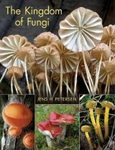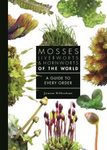By
Leon (NHBS Catalogue Editor)
19 May 2022
Written for Paperback

It is tempting to call animal domestication humanity's oldest and longest-running experiment, but professor of palaeobiology Marcelo R. Sánchez-Villagra would beg to differ. It is worth opening with a quote from
The Process of Animal Domestication to set the tone: "domestication is actually pretty poor as experiments go; there are too many variables involved with little control, and no records of how things started" (p. 206).
Before delving in, let us consider the scope of this book.
The Process of Animal Domestication focuses on genetics, evolution, development, and morphology. Such is the amount of research done on these topics that animal behaviour is barely touched on here. This would require a separate book and Sánchez-Villagra refers you a few. The bulk of the research covered here is on mammals (dogs feature prominently) and birds, with fish and insects getting two brief chapters at the end of the book.
Since many people own pets, and many more have been around pets or farm animals at some point, I am sure most of us think we understand domestication. How appropriate, then, the first chapter, that I would like to characterise as "everything you thought you knew about domestication is wrong". Forget the notion of centres of domestication, or of it being a historic event: "Domestication is a process, a transition, without clear boundaries in place and time" (p. 25). Forego a human-centric view that sees domestication as an intentional and goal-oriented decision on our part. Consider instead the option we had no long-term vision, and that animals have agency too, some possibly choosing domestication, as Stephen Bonduriansky has argued. Forget the dichotomy between wild and domesticated – think rather of "a continuum [...] of gradually intensifying relationships" (p. 1). The search for the "first" or "oldest" example is thus misguided; there are many other, more relevant questions to ask in zooarchaeology. And comparing current wild and domestic populations is fraught with difficulties: "no living population is any group's ancestral population" (p. 14). Wild populations of now-domesticated forms are often extinct. In short, this chapter read like a sobering reality check and was the highlight of this book for me.
Chapters 3 to 7 form the core and cover genetics, evolution, development, and morphology. There is so much material here that I can only give you a subjective highlights reel. What is notable is that the author discusses both how domestic animals shed light on biology, and how biology sheds light on domestic animals. In other words, he discusses both studies that use domestic animals as model organisms and studies on the biology of domestication.
So, Thomas Hunt Morgan and Sewall Wright studied domestic animals to make pioneering contributions to genetics, while studying genetics has revealed how traits of domestic animals come about, e.g. the mutations underlying different head crests in pigeons. An interesting question is whether the same genes are involved in domestic phenotypes across species. The answer so far is no. Given different phylogenetic histories, different genes are responsible for producing similar phenotypes. In studies of evolutionary developmental biology or evo-devo, domestic animals are model organisms in e.g. comparative embryology, while evo-devo studies have revealed e.g. developmental biases during digit formation.
The chapter on ontogeny – the development from egg to adult – focuses on what studies using domestic animals have taught us about the developmental mechanisms resulting in different phenotypes. The next chapter on life history and growth focuses mostly on how domestication affects ontogeny, e.g. growth, fecundity, seasonality of reproduction, litter size, gestation length, sexual maturity, tooth eruption, and lifespan. The chapter on morphological diversification similarly shows how domestic animals have been favourite study subjects to explore the concept of morphospace – the "universe of potential phenotypes" (p. 172) – and how domestication has resulted in variation in e.g. coat colour, body size and proportion, brain size and anatomy, and size and shape of skulls and teeth.
These core chapters are followed by one rather interesting chapter on some odds and ends. Here, Sánchez-Villagra argues feralization is not just domestication in reverse. Feral animals never fully return to a wild state, and environments have usually changed in the meantime, frequently because of disturbance by humans. He discusses domestication experiments on chickens, rats, and (famously) silver foxes, and the existence or not of the domestication syndrome. This is the idea that selection for tameness results in a suite of co-occurring phenotypic changes, a "package deal" that includes floppy ears, reduced aggression, and smaller brains. Sánchez-Villagra is more circumspect: though there are some generic changes across mammals, there are few universal domestic features.
A synthesis of this calibre is obviously going to be a mile wide and an inch deep, but that is the whole point.
The Process of Animal Domestication is a perfect entry point if you want to dig deeper into the biology of animal domestication, with 59 pages containing some 1500 literature references. What prevents this book from becoming an overwhelming infodump is its excellent structure. Each chapter is divided into many short, headed sections of 2-3 pages, with boxes used for asides.
A final point I appreciated is how outspoken Sánchez-Villagra is on topics of broader relevance. Domestication has depended on more than just animal traits; there is also a human cultural component to it. Not all people in history pursued it. Why? Because of "the different worldview or logic guiding the relations [...] with other animals". Understanding this cultural component will hopefully make us "realize the singular as opposed to universal nature of the Western world view" (p. 32). Our Western paradigm of prosperity through perpetual economic growth has stimulated the production of animal protein at the lowest cost, disregarding environmental and animal welfare issues. Selective breeding for (economically) optimal traits can cause suffering and pain. Changing this, the author argues, will require changes in consumer behaviour and economic imperatives.
The Process of Animal Domestication is a fascinating book that comes highly recommended. Its synthesis of a large body of research makes it incredibly valuable to evolutionary and developmental biologists, geneticists, anthropologists, and (zoo)archaeologists. However, the writing is accessible enough that (under)graduate students wanting to read up on animal domestication can safely turn to this book as well.























![Kame no Kōra wa Abarabone: Jintai de Arawasu Ugokumonozukan [Turtle Shells Have Ribs: A Picture Book of Animal Anatomy Represented by the Human Body]](http://mediacdn.nhbs.com/jackets/jackets_resizer_medium/24/249897.jpg?height=150&width=99)










